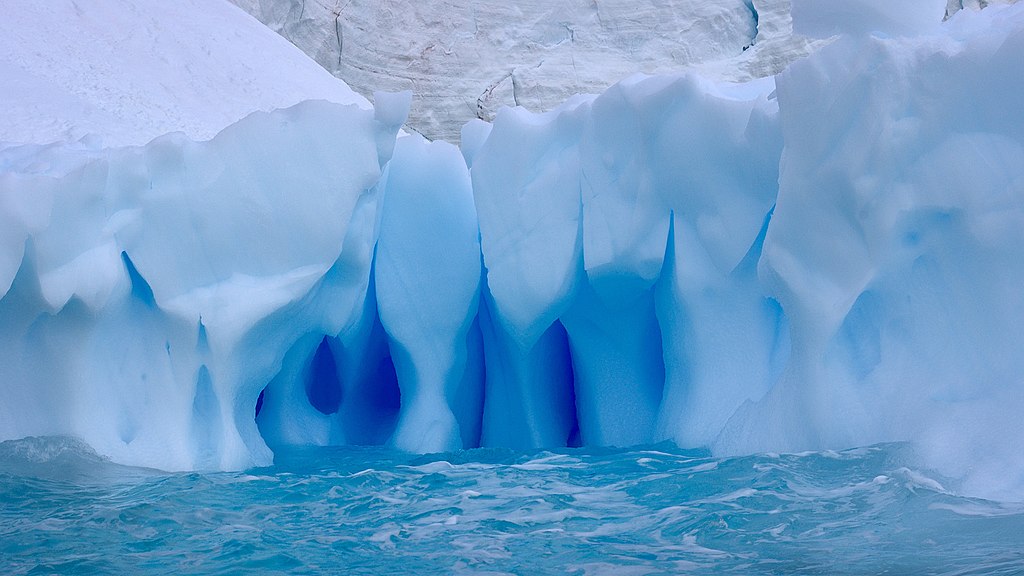This could only have happened if the massive ice sheet that now separates those populations wasn’t there at the time. So yes, it did collapse. And that’s bad news, because it increases the likelihood that it will happen again.
The Importance of Antarctic Ice
While ice is melting at both poles, the situation in the Antarctic is much more dramatic. The North Pole is just a relatively thin layer of frozen water that expands and contracts with the seasons—its volume ranging from a few hundred thousand to a few million cubic kilometers (several hundred thousand cubic miles). Scientists predict the Arctic could be entirely ice-free in summer by 2035 and year-round by 2050. At that point, there will just be open ocean at the top of the world.
The South Pole, in contrast, has a solid foundation, upon which rests a thick ice layer up to several kilometers (a couple of miles) deep. In all, Antarctica holds 26.5 million cubic kilometers (6.4 million cubic miles) of ice, which represents about 90 percent of the world’s total ice volume.
That abundance of ice obstructs our view of the continent beneath, which is much smaller than what currently appears on our maps—a vast white blob with a small tail.
Read more at atlasobscura.com.

